What a joy to have been part of the writers who shared poetry from their collections at Saint Mungo’s Mirrorball Showcases throughout 2024. The team there have a such a strong commitment to poetry. Big thanks!
What a joy to have been part of the writers who shared poetry from their collections at Saint Mungo’s Mirrorball Showcases throughout 2024. The team there have a such a strong commitment to poetry. Big thanks!
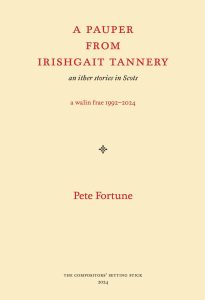 I was honoured to be reading, with more than a dozen others, at the launch of Pete Fortune’s two latest short story collections: Waving at Strangers in Passing Cars and A Pauper from Irishgait Tannery (both The Compositors’ Setting Stick). The Coach and Horses in Dumfries was the venue.
I was honoured to be reading, with more than a dozen others, at the launch of Pete Fortune’s two latest short story collections: Waving at Strangers in Passing Cars and A Pauper from Irishgait Tannery (both The Compositors’ Setting Stick). The Coach and Horses in Dumfries was the venue. 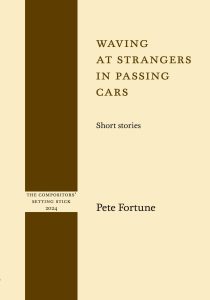
Excellent readings from the man himself and the host of others. Thanks to Robyn and all at the venue. Great place and wonderful words and wonderfully hosted by Hugh McMillan.
The books are excellent: contact Pete for copies.
As would be expected, the party carried on into some kind of chaos soon the sterrs efter. 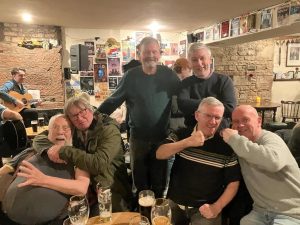
The second time I’ve been lucky to go to Ireland with the Runaway Poets. On this occasion, we were Neil Young, Julie McNeill, Jessamine O’Connor and me. Neil, Julie and Jessamine are all part of the wonderful Drunk Muse Press, along with another Runaway Poet, Hugh McMillan.
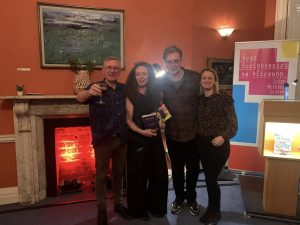
This was a two-gig tour from the east to the west of Ireland: Dublin to Boyle. The Irish Writers’ Centre gig was a launch event for Julie’s wonderful We Are Scottish Football (Luath) and Neil’s The Song She Didn’t Sing (Seahorse Publications). We’d a great crowd there, right in the heart of Dublin, with Jessamine and me as the support act for these two wonderful books. Neil and Julie had a fantastic reception for their work.
The Boyle gig was in the splendid surroundings of King’s House: a magical gig last night with the four of us reading again followed by a wonderful open mic with poetry and music, including from the superb Ivy O’Connor and the fabulous Sinead McClure.
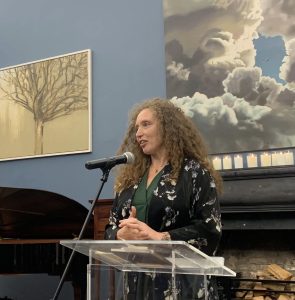 Huge gratitude to everyone who came to hear us in both places, to buy books, to share the craic and to drink in pubs after.
Huge gratitude to everyone who came to hear us in both places, to buy books, to share the craic and to drink in pubs after.
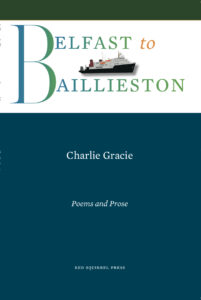 Charlie will be reading from Belfast to Baillieston on the following dates:
Charlie will be reading from Belfast to Baillieston on the following dates:
Tuesday 17 October 2023: Scottish Writers’ Centre, Glasgow, 19.00 (at the Red Squirrel Press Showcase, chaired by Sheila Wakefield)
Thursday 23 November 2023: Baillieston Library, 18.00 (with Airdrie’s finest, Peter A.)
Monday 4 December 2023: Balloch Open Mic, 19.00 (chaired by George Gibson)
Thursday 7 December 2023: Stirling Central Library, 17.30 (with Moira McPartlin, Chris Powici and Liane McKay)

Pop-up bookshelves in the Tannery Hoose Windae – just about all the books I bought in 2021. What a lot of great reading I’ve had during that terrible year.
On the day I took the photo of the pop-up bookshelves, I’d left the three books I was currently reading in the house. So, a special mention for The Poison Glen by Annmarie Ní Churreáin, Luckenbooth by Jenni Fagan and Queen of Infinite Space by Ruth Aylett. All excellent and still on the go.
A load of the books on the pop-up bookshelves relate to a project I undertook with The Song House in County Donegal. The Irish poet, Annemarie Ní Churreáin and I worked with Sineád and Candy from the Song House to develop three poetry workshops around the life and influence of Colmcille, known in Scotland as Columba, whose 1500th anniversary of birth was in 2021. This Irish prince, poet and preacher was a warrior in his homeland and a church-planter when he travelled to what is now Argyll. He likely started off in Dunaverty in Kintyre before sailing to Iona some time later. Iona is the place we in Scotland associate with Colmcille/Columba most and he is seen as peacemaker now. Annemarie and I ran the three workshops on-line in the autumn of 2021 and had participants from Ireland, Scotland and Spain. Many of the participants recorded the poems they wrote from there and these will be featured on the Song House website from the end of January 2022. I learned a lot about Colmcille/Columba from many excellent poems of Kenneth Steven and Elizabeth Rimmer and from fantastic biographies by Brian Lacey and Ian Bradley.
I’d a load of wonderful poetry books to read in 2021. Too many to mention them all, but I was excited by Seahorse Publications’ Wanderlust Women, the launch of which I was honoured to chair at Avant Garde in Glasgow before all the Covid cerry oan kicked in again (features: Linda Jackson, Lesley Benzie, Tracey Patrick and Donna Campbell). Among other highlights were Victoria McNulty (Exiles), Aoife Lyall (Mother, Nature), John Bolland (Pibroch) and Des Dillon, whose Muscle work, Alcohol and Blame is a tour de force, both in poetry and visual art.
The 21st anniversary edition of Magi Gibson’s Wild Women of a Certain Age was a treat to see.
The death of Billy Bonar was a great loss to Scottish Poetry. His last collection, The Stuff of the Earth, is stunning. A prize has been initiated in his name, run jointly by his publisher, Red Squirrel Press, and St. Mungo’s Mirrorball, of which he was co-founder. The first William Bonar Prize will be awarded in February 2022.
It was a great year for fiction. I was honoured to have work in Postbox Magazine: Issue 5, Scotland’s international short story magazine. I was doubly honoured to feature on the cover.
I would draw your attention to the novels Wildgoose, by Sally Evans, and No Harm Done, by A J Liddle. Sally’s book is a stunning story that covers many decades of two fictional and other real and fictional poets’ lives. It’s a beauty and will blow your mind. Al Liddle’s debut novel in his Georgia-based Ramaz Donadze series of crime thrillers won him a place on the shortlist for the Bloody Scotland Debut Prize in 2021. An accolade indeed for a very fine read.
I also loved Des Dillon’s Pignut and Nuncle, a fascinating, dark delve into the fantastical meeting of Jane Eyre, King Lear and The Fool; Alan Bissett’s amazing novella, Lazy Susan (from the same Speculative Books stable as Victoria McNulty’s Exiles) and Moira McPartlin’s Before Now: Memoir of a Toerag, a funny, poignant and deeply human story set in the heart and tongue of Fife. I savoured Bernard MacLaverty’s superb short stories in Blank Pages over many weeks, one of these books you read more slowly as you get towards the last story to scrape the last tasty morsel possible.
The absolute top non-fiction book of the year for me was the memoir by George Szirtes of his mother: The Photographer at Sixteen. This is a book you could read again and again, such is its depth of historical significance and poetic and literary strength. First published in 2019, it won the James Tait Black Memorial Prize.
The shelves might have survived the weather since I put them up. Why not be next in the Tannery Hoose Windae? Check out how to take part here.
Happy Christmas to everyone!
What better than a Poinsettia to brighten up the Tannery Hoose Windae!
The poinsettia (Euphorbia pulcherrima) is indigenous to Mexico and Central America. It is particularly well known for its red and green foliage and is widely used in Christmas floral displays. It derives its common English name from Joel Roberts Poinsett, the first United States Minister to Mexico, who is credited with introducing the plant to the US in the 1820s. Poinsettias are shrubs or small trees, with heights of 0.6–4 m (2.0–13.1 ft).
Wild poinsettias occur from Mexico to southern Guatemala, growing on mid-elevation, Pacific-facing slopes. One population in the Mexican state ofGuerrerois much further inland, however, and is thought to be the ancestor of most cultivated populations. Wild poinsettia populations are highly fragmented, as their habitat is experiencing largely unregulated deforestation. They were cultivated by the Aztecs for use in traditional medicine. They became associated with the Christmas holiday and are popular seasonal decorations. (Source – Wikipedia.)
Grow your poinsettia in bright, indirect light, in a draught-free spot with a temperature of around 13-15°C. Water sparingly, typically when the surface of the compost has started to dry out. Mist regularly to increase humidity and keep the colourful bracts looking their best for longer.
If buying your poinsettia from a garden centre or supermarket, make sure it’s in good condition and that no leaves are wilting, as wilting leaves can be a sign that they’ve been stored in too-cold conditions. Avoid buying poinsettias that have been displayed near a door or even on a petrol station forecourt – they simply won’t last. Then take care to ensure it’s well protected on the journey home, making sure its delicate leaves aren’t exposed to freezing temperatures – ask the shop assistant to wrap it up or cover it in a plastic bag if you need to. Don’t leave your poinsettia in the car for longer than is absolutely necessary as temperatures can quickly tumble and your poinsettia will suffer.
Once home, pop your poinsettia in a bright, draught-free spot out of direct sunlight, ideally 13-15ºC. Water only if the surface of the compost is dry, and continue to water sparingly. Increase humidity by spraying gently with water every few days. This will help keep the leaves and bracts in tip-top condition. Dust the leaves as and when you need to.
After Christmas, start feeding your poinsettia with a liquid plant food that’s high in potassium, such as tomato food.
It’s not easy to get your poinsettia to flower again, but if you’re up for a challenge, follow these instructions carefully:
In April, prune your poinsettia back to about 10cm, and keep at a temperature of 13°C. In early May, repot your poinsettia into a slightly larger pot with fresh, peat-free, loam-based compost, and then keep it in a draught-free spot out of direct sunlight, ensuring the temperature doesn’t exceed 18ºC.
Poinsettias develop flowers and colourful bracts when day length decreases. This occurs naturally in December, but to encourage flowering by Christmas, you’ll need to mimic short day length by moving your poinsettia into a dark cupboard for 12 hours each day, from November. Keep an even temperature of around 18ºC and make sure it’s not exposed to artificial light during this time.
Once your poinsettia has started flowering, mist leaves daily to keep them looking their best for as long as possible.
Storm Arwen ravaged many parts of Scotland and elsewhere in the British Isles. Like all storms, a harvest of wood follows, once we’ve cleaned up, restored electricity and mourned the sad deaths.
It’s a strange human thing, to seek out the profit from disaster, pick the small victories after Nature’s force has beaten us. Tolkein’s mythical elven princess, Arwen, from The Lord of the Rings would never have chosen to do what Storm Arwen did: destroy human life and disrupt human living. She was an immortal, over 2,700 years old when she met Aragon, and, in a Christ-like turn, gave up her eternal status to marry the human Aragon. Not at all a destructive force, except that maybe she destroyed herself for something fleeting. The destruction in Mount Doom feels more like what this storm wrought. (I’m not a fan of the Ring books by Tolkein; I tried to read The Hobbit when I was eleven, but just hated it. Loved the films, but.)
Like many people after Storm Arwen, I’ve been scouting about for wood to fetch and cut and store for future burning. This wee log is part of my first haul, the only one that would fit in the Tannery Hoose Windae. I love the way the colours work with the rust metal plate at the back of it, how the down pipe and the wall are as ragged and worn as the wood looks. Beautiful.
The log is from a small branch of an old birch, home to lichen and birds and all sorts of beasties. After decades of slow growth, the storm brought it crashing down. In a couple of years, once it’s seasoned and then been cut and then been stacked and dried, it’ll feed my wood-burning stove, perhaps on a night like the one Storm Arwen came,
It’s an ill wind…
After a break since Tannery Hoose Windae #6, we are back with an awesome tribute from Fiona Macpherson to her aunt, Nina Williams (née Macpherson).
Nina was born on 15 November 1921 in the Tannaree (which is what Fiona and many other people call the Tannery Hoose). Nina was the eldest of six Macpherson children and is the sole survivor. The family lived there until 1950 when Fiona’s grandparents moved to the Main Street.
Fiona took this beautiful photo of Nina in the Tannery Hoose windae.
Nina is now in a care home in Clackmannanshire and will be celebrating with close family… I know many folk in the village remember her very well as Brown Owl, in the shop and in drama productions.
Tannery Hoose Windae #6: Thornhill Moos! Check out this brilliant cover on the the latest issue of Thornhill Views, renamed for the occasion. The children in the local Primary School have been celebrating the return to full-time education with a host of creative activities, including these superb heelan kye.
The Tannery Hoose Windae #5 featured lilies, with all their resonance for new life and hope. Thornhill Moos has cheered us all up no end too!
Here’s what the editorial team for Thornhill Views says about this issue
…. plus all the usual features
Why not follow this link to read the whole issue: https://drive.google.com/…/1sFGQMKC0Nlz4Ht0F1Fu…/view…
One of the most sought-after Scottish experiences that Visit Scotland knows visitors can’t seem to get enough of is meeting Scotland’s hairy and loveable Highland cows. Or as we Scots call them, Heelan Coos or Heelan Kye.
Iconic, cute and extremely photogenic, these hardy, docile animals are to be found right across Scotland, including the islands. Depending on where in Scotland you’re visiting, Vist Scotland has put together some top picks in a country-wide guide for getting up close to them.
Starting from the north and working south, then the islands, and finishing with fun-filled agricultural shows… Check the Visit Scotland website for more information about heelan kye to cheer you up.

Greek mythology tells us what we call Easter Lilies were created from the breast milk of Hera, wife of Zeus. The story goes that Zeus had a son, Heracles, with a mortal woman. Hera agreed to breast feed Heracles in order that he become immortal like his father. Some of her milk was spilled in the heavens, creating the Milky Way, some fell to earth, creating the first lily. Later, Christians claimed that Easter Lilies first rose from the tears of Eve, shed on her banishment from Eden.
The first known picture of a lily appeared in Crete around 1580 BC and they have become a symbol of fertility for pagans and Christians. The Old Testament, New Testament and many other ancient books across the world mention the flower.
Lilies still represent purity and abundance in Greece, where brides wear crowns made of lilies and wheat. In China, the lily is called bǎi hé. The Chinese proverb Bǎinián hǎo hé means “happy union for one hundred years.” Therefore, the lily, or bǎi hé, is a symbol for a long-lasting and happy marriage. In Ireland, Easter Lilies commemorate the Easter Rising of 1916. This set in motion the events that led to the establishment of Eire.
In most cultures in history, the lily represents purity, chastity and virtue. However, the lily is a symbol of death in some civilizations. Sprinkled on the graves of innocent children, saints and martyrs, lilies can represent purity in passing.
Easter lilies (Lilium Longiflorum) adorn many churches at Easter, symbolising the resurrection of Christ. Some Christians believe that lilies emerged where drops of Christ’s blood fell as he hung on the cross. Christians also strongly associate the lily with the Virgin Mary as a symbol of her chastity and purity.
A contrast to the funky multi-coloured parrot that appeared in the Tannery Hoose Windae last time!
Happy Easter fae the Tannery Hoose Windae!